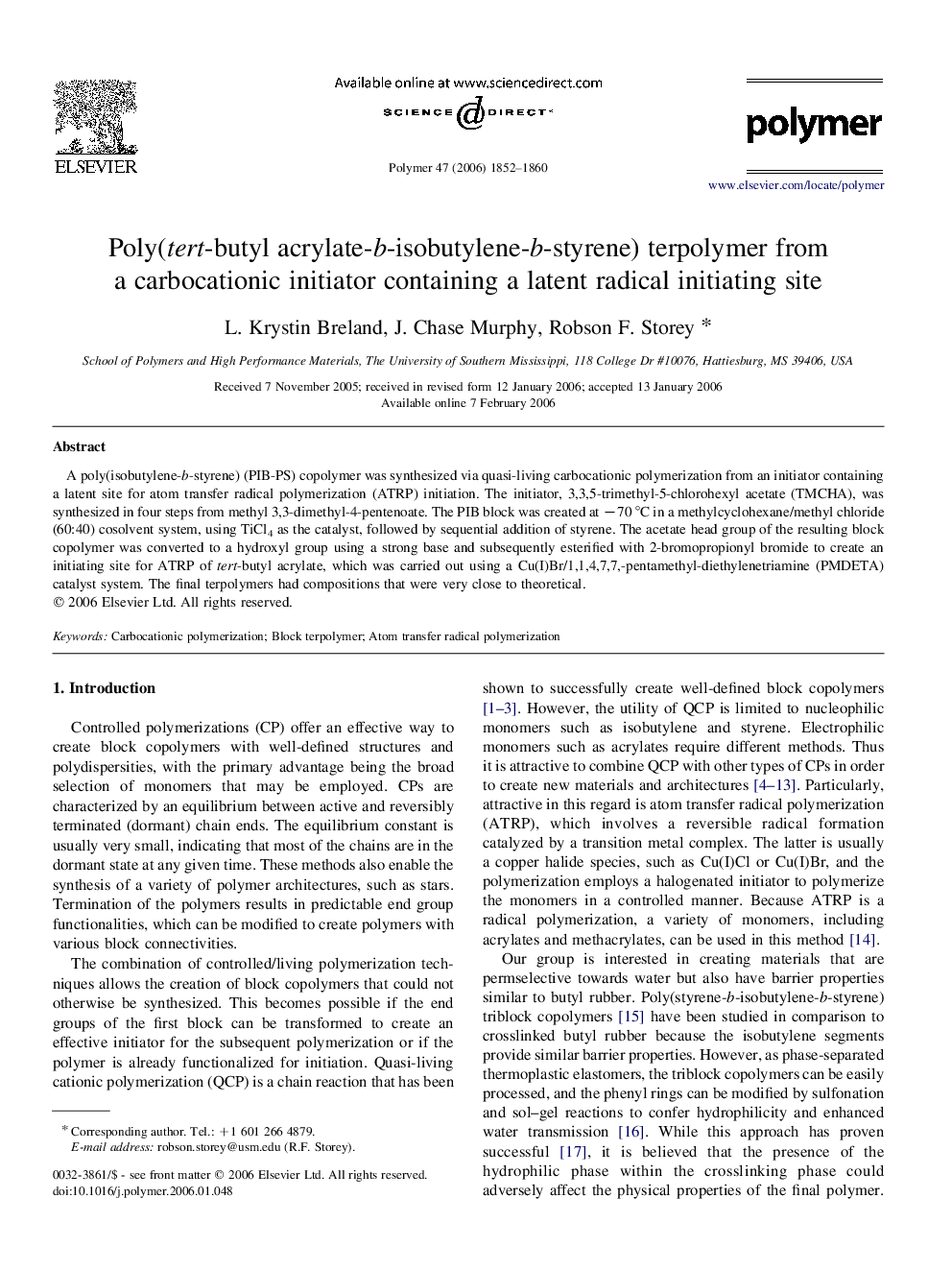| Article ID | Journal | Published Year | Pages | File Type |
|---|---|---|---|---|
| 5187303 | Polymer | 2006 | 9 Pages |
A poly(isobutylene-b-styrene) (PIB-PS) copolymer was synthesized via quasi-living carbocationic polymerization from an initiator containing a latent site for atom transfer radical polymerization (ATRP) initiation. The initiator, 3,3,5-trimethyl-5-chlorohexyl acetate (TMCHA), was synthesized in four steps from methyl 3,3-dimethyl-4-pentenoate. The PIB block was created at â70 °C in a methylcyclohexane/methyl chloride (60:40) cosolvent system, using TiCl4 as the catalyst, followed by sequential addition of styrene. The acetate head group of the resulting block copolymer was converted to a hydroxyl group using a strong base and subsequently esterified with 2-bromopropionyl bromide to create an initiating site for ATRP of tert-butyl acrylate, which was carried out using a Cu(I)Br/1,1,4,7,7,-pentamethyl-diethylenetriamine (PMDETA) catalyst system. The final terpolymers had compositions that were very close to theoretical.
